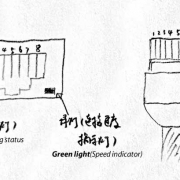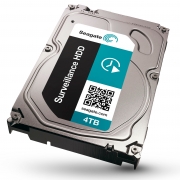Video storage in security
In the security monitoring system, video storage is a very important part, and video files are recorded and saved for later query. How to ensure the safety and reliability of the video files is particularly important, and choosing a suitable video storage method is an important part of it.
Common recording storage methods
SD/TF card storage
The front-end camera supports SD/TF card storage, inserts a TF card, and saves the video files in the TF card. The back-end uses a web page or client (computer PC, mobile phone APP) to replay the video, backup download and other operations.
Some even support, unplug the TF card from the camcorder and plug it into the computer to play directly on the computer. Although it is convenient, the security and privacy of this design of video data are not guaranteed, and it is not desirable. At least, it should be designed to use a special TF card hard disk player to read the video files in the TF card to ensure convenience and convenience while also taking into account privacy and security. Recently, Robin Li of Baidu said that Chinese people are willing to trade privacy for convenience, and I don’t know how to evaluate it!
Regarding the quality of the TF card, the speed of reading and writing is also very important. Now many security companies have introduced dedicated TF cards for video surveillance. In my opinion, the gimmick of this product is greater than the reality. We know that there are special hard disks for surveillance, which have many benefits. You can refer to this article: HDD in video security. As a storage medium for video surveillance, we are concerned about the speed of reading and writing. The TF card has been classified in detail according to the speed of reading and writing. There is no need to create a special TF card category for video surveillance.
| Write speed | Speed class | Ultra high speed grade | Video speed rating |
| 90MB/s | V90 | ||
| 60MB/s | V60 | ||
| 30MB/s | U3 | V30 | |
| 10MB/s | Class 10 | U1 | V10 |
| 6MB/s | Class 6 | V6 | |
| 4MB/s | Class 4 | ||
| 2MB/s | Class 2 |
From the list, we can see that the worst Class 2 can also reach a writing speed of 2MB/s, and at least can record high-definition video of 1500kbps stream.
NVR/DVR storage
NVR/DVR storage, that is, the use of a dedicated embedded video recording device, an external hard disk, to record video to the connected camera. The advantage is that the number of connected cameras is flexible, the number of connected hard disks, the capacity is optional, and the recording method is also optional.
In addition to the video recording function, the general NVR/DVR can also be connected to the monitor for output, real-time preview of the screen, and playback of the video. It can manage the connected cameras in a unified way. After connecting to the Internet, it also supports remote viewing, video playback, etc., such as mobile phone APP, computer client and so on.
PC + client
After the network camera, DVR/NVR is connected to the LAN through the switch, the corresponding client can be installed on the LAN computer to manage the equipment, of course, including recording, and the video files are stored in the computer hard disk. Our commonly used office computers are not suitable for running 24 hours a day, so this computer + client recording method is only suitable for temporary recording, not for continuous recording for 24 hours, and stability is not guaranteed.
Server + software platform
Using a dedicated server + software platform can continue to record 24 hours a day. The server is stable and reliable, and various performance parameters can also be flexibly selected. At the same time, the functions of the software platform are also diverse, such as access, storage, streaming media forwarding, matrix and so on. In terms of storage alone, we can flexibly choose the required server performance, number, number of hard drives, capacity, etc. according to the number of connected devices and the storage time of the video.
IPSAN(NAS)
In some special industries, such as banks, video data needs to be stored for 3 months or even longer, requiring a lot of hard disk space. At this time, we can choose IPSAN to expand the storage space. In a narrow sense, IPSAN is just a hard disk cabinet, which requires an additional server to map the hard disks in the IPSAN before it can be used. Now some IPSANs have their own operating systems and can run security software directly on them. Even some IPSANs dedicated to security have their own dedicated security management and storage software, which can be used directly.
The advantage of using IPSAN storage is that the hard disk capacity space can be increased and expanded at any time, theoretically, the space can be unlimited. Hard disk data can be arrayed, which greatly increases security.
| RAID type | HDD at. least | Speed | Capacity | Features |
| Raid 0 | 2 pcs | 2 times | 1/2 | Hard disk failure data is unrecoverable |
| Raid 1 | 2 pcs | Original speed | N | Data can be recovered if a piece of hard disk is damaged |
| Raid 5 | 3 pcs | N-1 | N-1 | Data can be recovered if a piece of hard disk is damaged |
| Raid 6 | 4 pcs | N-2 | N-2 | Data on damaged two hard drives can be recovered |
| Raid 10 | 4 pcs | 2 times | 1/2 | Raid 1+Raid 0 |
FTP storage
FTP is the abbreviation of File Transfer Protocol. As the name implies, it is a protocol specifically used to transfer files. If the camera supports FTP storage, we can upload the camera’s pictures, videos, etc. to the FTP storage server through the FTP protocol. Of course, if the camera does not support, we can also use the third-party FTP storage service function.
iscsi data block direct connection
The front-end camera or NVR supports the storage mode of iscsi data block direct connection. The front-end device is filled with the address of the storage server such as NAS, and the video of the front-end device is directly stored in the back-end NAS.
Cloud storage
The core of cloud storage is decentralization, and its stability and reliability are greatly enhanced. Each storage device can operate independently.
Cloud storage in a narrow sense refers to the direct recording of video files to cloud space on the Internet after front-end cameras and DVR/NVR are connected to the Internet, such as traditional Baidu cloud disks, Gooel Drive, Dropbox, or cloud storage services built and provided by equipment manufacturers themselves.
Cloud Edge
Cloud-side integration in the general sense refers to the camera’s local built-in TF card storage, and then the back-end NVR or management storage center for secondary storage, or even multiple storage. The advantage is that the stored video data can be backed up by each other. At the same time, if the monitoring network fails, the video data is first saved in the TF card of the front-end camera. When the network is restored, the video data in the TF card will be automatically uploaded and restored to the back-end management storage center. It is also called resuming the transmission at a breakpoint, or automatic supplementary recording when the network is disconnected.
Disconnected network replenishment, namely ANR (Automatic Network Replenishment). When the network fails between the camera and back-end storage devices, such as video recorders and storage servers, the front-end TF card cache will be automatically enabled. When the network is restored, the data will be automatically migrated to the storage device to improve storage security. The function of supplementary recording after disconnection needs to be supported by both front and back devices and used in conjunction.
Security storage architecture
Distributed storage
When multiple sites need centralized management and monitoring, a distributed storage design can be used. Each site manages the camera recording and storage video locally. The central control center can view and manage the recordings of each site.
Centralized storage
All front-end cameras are connected to a unified management control center to manage, and record and store videos. Multiple servers perform different tasks, such as storage, streaming media forwarding, and central management. The control center determines which type of video is stored in which storage server. Thanks to the dedicated storage server, load balancing can also be achieved. System settings can be expanded by adding more storage servers when necessary, and maintenance can be performed without shutting down the entire system.
Combination of distributed storage and centralized storage
In addition to the cloud-side combination described above, this storage architecture can also be a combination of the previous two storage methods, both local storage and centralized storage in the center. Better ensure the safety and reliability of video data.
Video record mode
Timed recording
Record continuously according to the set time, every day and every week. Of course, you can also choose a specific time period to record.
Alarm recording
Record video according to certain alarm rules. It does not usually record, but only when the alarm is triggered. Such as motion detection, human form detection, sound detection, etc. Generally, you can also set the length of time to trigger the alarm and the length of the video.
External alarm, linkage video
The device supports an external alarm, which can be linked with the alarm to record.
Factors to consider for video storage
Network bandwidth
When the number of front-end access cameras is large, the stability of the entire surveillance network needs to be considered. In particular, the bandwidth issue is particularly important.
In addition to starting from the switch performance, you can also pay attention to these aspects, such as dividing VLANs, using streaming media forwarding, and so on.
Hard disk read and write speed
Whether the read and write speed of the hard disk meets the video recording requirements of the connected camera. You can consider using Raid to increase the hard disk read and write speed or appropriately reduce the camera’s code stream, frame rate, etc.
Hard drive capacity
When the required number of hard disks is difficult to meet, consider appropriately reducing the camera’s parameters or whether to use other recording methods such as alarm recording.
Stored data
- Picture/Video
- Alarm video/picture
- Structured data (faces, license plates, attributes, etc.)
- Abstract condensed




Thank you for pointing out that, in addition to TF card quality, reading, and writing speed are also crucial factors. TF cards specifically designed for video surveillance have now been released by several security firms. My acquaintance said that the building where she works is unsafe because a trespasser passed by last week. I’ll advise her to get a decent TF card and a 24-hour video surveillance storage facility.